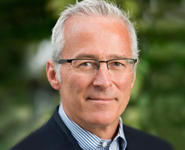
By Terry Edwards, President and CEO, PerfectServe
Twitter: @perfectserveCEO
Twitter: @PerfectServe
The healthcare industry is known for being conservative and slow-moving. It can take years, or even decades, for changes to take hold. In fact, (as a side bar), my company recently executed an agreement with a system that took two years to get through legal. Yes, you read that right: two years to get through the contract process—and we’re not a difficult company to work with! But I digress… New reimbursement models will demand clinicians and their organizations to collaborate and share information more regularly, suggesting that the pace of change should increase steadily. The quickened pace will usher in new programs, models, and enabling technologies that will transform the industry into one that’s more collaborative, connected and united.
As we enter 2015, I see five trends driving change:
- Expect more market consolidation. In the past few years alone, we’ve seen a record number of mergers and acquisitions in healthcare. This trend will continue throughout much of 2015, resulting in more complex healthcare delivery organizations, with care team members working in the acute, ambulatory and post-acute care settings. These health systems will look for tools to facilitate collaboration and communications among clinicians to speed time to intervention, which is critical to reducing the cost of care and improving quality and outcomes.
- Shared risk models will drive collaboration. Healthcare delivery organizations are adopting value-based reimbursement, readmission reduction, bundled payments, and other delivery models with the common goals of reducing costs and improving outcomes. The success of these models depends upon effective care coordination, which, in turn, depends upon effective communications. In 2015, healthcare constituents of all kinds – payers, providers, and the suppliers who support them will increase their focus on collaboration. In addition, the patient will increasingly join this collaborative effort. We’ll start to see more demand for comprehensive solutions across the healthcare ecosystem to unite clinicians and patients inside and outside the “four walls” of the hospital.
- Emergence of real-time healthcare system. Increased data collection via EMRs, big data analytics, clinical decision support, increased clinician mobility, and the realization of the Internet of Things (IoT) will jointly lead to the emergence of a real-time healthcare system. These forces are unstoppable and will only continue in 2015—pushing healthcare delivery organizations to find ways to connect care team members across the continuum in real-time so that clinicians can be aware of the pertinent things that are happening with their patients right now.
- Interoperability goals to expand. The healthcare industry has talked about EHR interoperability for several years, but still little progress has been made. In 2015, the focus will broaden to interoperability across all technologies. Healthcare organizations will focus on connecting all tools, from EHRs to monitors to communication devices, so that they can share data and information, to help the industry manage patient care across entire populations.
- Heightened focus on security. Every healthcare organization is dealing with protected patient health information (PHI). However, some organizations understand the risks associated with communicating PHI across organizational boundaries more than others. In light of 2014’s slew of healthcare data breaches, which exposed more than 9 million patient records, healthcare organizations will step up their efforts to develop comprehensive security strategies to address all risks facing the fidelity of patient health information – and their organizations’ reputations.
There’s much more work to be done. However, I think the industry will make progress this year as the pace of change and innovation continues. I’m interested in what trends you see for 2015. Please drop me a reply.
About the Author: Terry Edwards is the visionary founder, president and CEO of PerfectServe. As chief executive, Edwards has dedicated himself to helping clinicians provide the best and most efficient patient care—while delivering most satisfying customer experience in the healthcare industry.
This article was originally published on The Connected Clinician and is republished here with permission.
